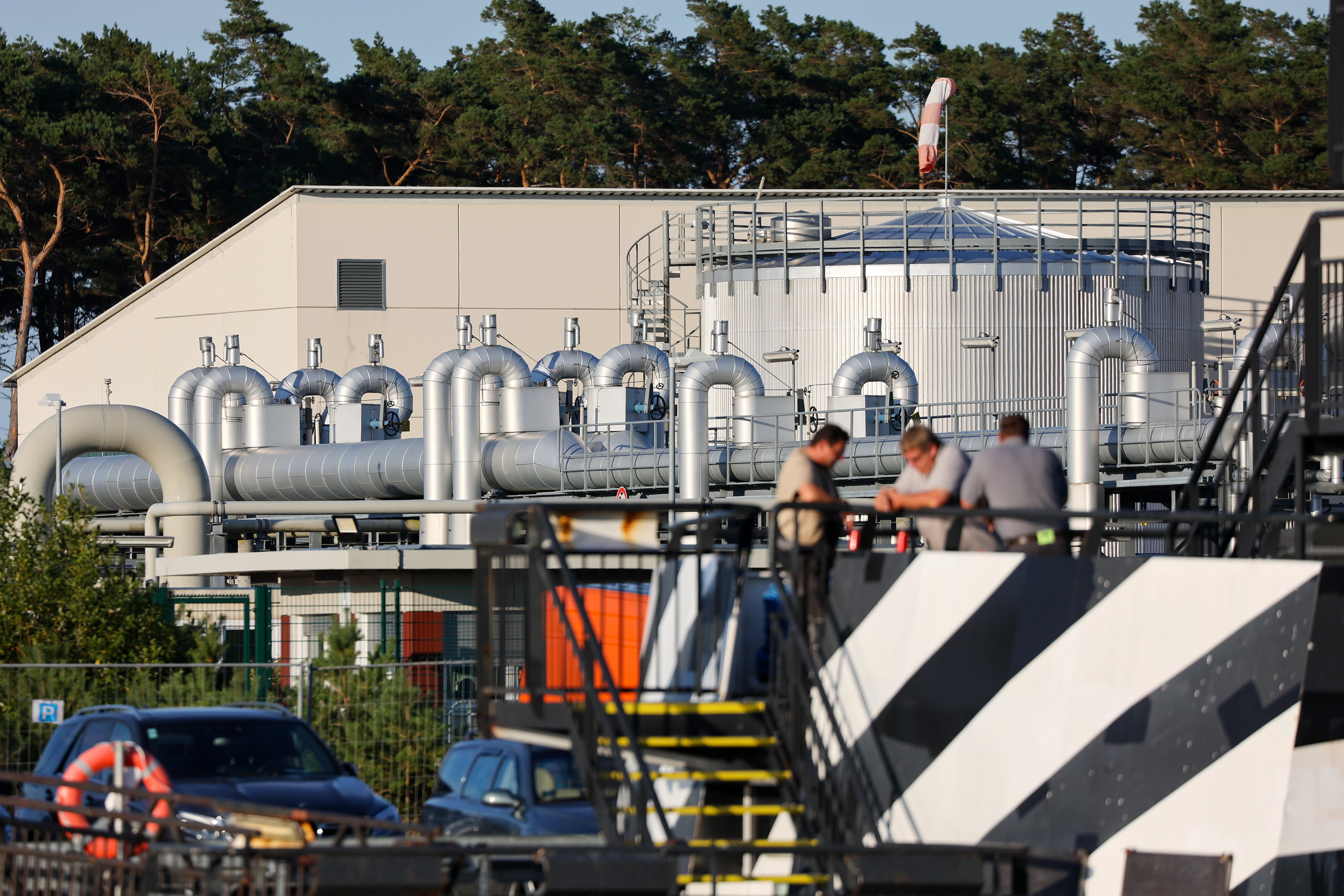Euro slides below 99 cents after Russia halts gas supplies to Europe
LONDON — The euro fell below 99 cents for the first time in 20 years Monday, after Russia said it would shut off its main gas supply pipeline to Europe indefinitely.
The EU’s common currency was trading around 0.9915 versus the dollar by 1:00 p.m. London time (8:00 a.m. ET), having climbed off lows of $0.9881 hit earlier in the day.
Loading chart…
The dollar index, which measures the greenback against six major currencies, also breached a fresh two-decade high as the British pound slid on fears over energy supply and European economic growth.
On Friday, Russian energy supplier Gazprom said it would not resume its supply of natural gas to Germany through the key Nord Stream 1 pipeline, blaming a malfunctioning turbine. The announcement was made hours after the Group of Seven economic powers agreed on a plan to implement a price cap on Russian oil.
The front-month gas price at the Dutch TTF hub, a European benchmark for natural gas trading, was nearly 30% higher Monday morning, hitting 282.5 euros per megawatt hour.
It comes ahead of a meeting of the European Central Bank Thursday, when economists expect it to raise rates by 50 or 75 basis points against a backdrop of concern over Europe’s ability to meet its energy needs this winter and the potential for a hit to growth.
“We expect that Russia is respecting the contracts that they have, but even if the weaponization of energy will continue or will increase in response to our decisions, I think that the European Union is ready to react,” Paolo Gentiloni, the EU’s economics commissioner, told CNBC over the weekend.
“Of course, we have to save energy, we have to share energy, we have [a] high level of storage and we are not afraid of Putin’s decisions.”
Janet Mui, head of market analysis at U.K. wealth management firm Brewin Dolphin, told “Squawk Box Europe” prospects for European markets are looking “very grim indeed” as the reality sinks in that Russia is likely to continue restricting its gas supply to the region.
“Investors will be very cautious going forward now,” she said. “The very clear implication is that euro assets will be under pressure.”
The flip side, she said, was that the dollar would be much stronger against both the euro and sterling.
The British pound was down around 0.2% on the previous session at 1.1488 against the dollar at 1:20 p.m. London time, after it was announced Liz Truss would be the new U.K. prime minister.
Truss must now reckon with a growing cost-of-living crisis fueled by soaring energy bills.
Sterling fell 4.5% against the dollar in August, its worst month since Brexit, and one analyst forecast that it would “plumb new depths” due to political and economic uncertainty, potentially hitting $1.05 by the middle of next year.
Mui said a stronger dollar could prove disinflationary for the U.S. economy, meaning the Federal Reserve does not need to be so aggressive in rate hikes going forward.
“A lot of bad news is already being priced in in the U.S. market, whereas in Europe it is probably not there yet,” she said.
Viraj Patel, global macro strategist at investment advisory Vanda Research, said many investors were seeking to short the euro and European government bonds, which have seen a spike in yields over the last month on the expectation of interest rate rises.
“These markets are selling off on any bad news related to the Russia gas flows narrative, whilst reluctant to rally on any marginal improvement in the energy crisis,” Patel told CNBC by email.
However, Patel added that bad news could start to become good news for under-owned European assets.
“The market is under-appreciating the chance for policy intervention from government officials helping to reduce stagflation risks on the continent,” he said, meaning the case for a euro rise to 1.05 against the dollar now looked equal to, if not greater, than the case for a fall to 0.95.
Yesterday the German government announced a 65 billion euro package to reduce consumer energy bills and support businesses.





